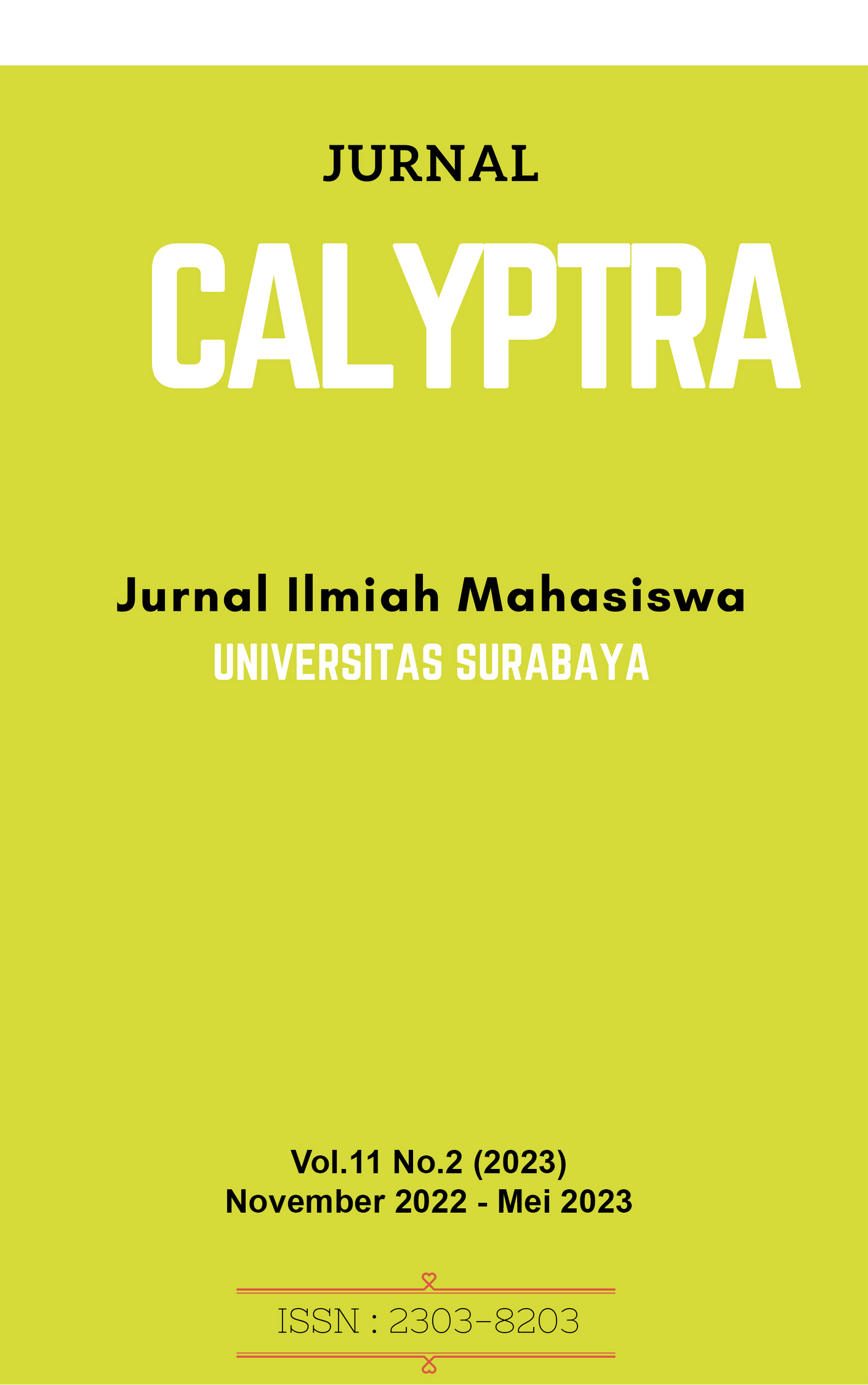PERANCANGAN TABLEWARE MENGADAPTASI BUNGKUS MAKANAN TRADISIONAL PINCUK DARI INDONESIA
 Abstract Views:
124 times
Abstract Views:
124 times
 PDF Downloads:
83 times
PDF Downloads:
83 times
Abstract
Abstract —This research aims to create a cutlery product that is comfortable when carried in hand, when we eat sometimes there are situations where we don't use a table to place cutlery and of course, we will carry the cutlery in our hands and eat in that position. However, it's a shame that the existing cutlery designs don't have a plan adapted for use in that situation. In the process of solving this problem, the author has an idea to adjust the traditional food packaging, pincuk which has a function similar to the objectives of the research. In the process of conducting this research, the authors also made observations on the forms of cutlery that already existed, the most influential positions of the arms and hand grips when holding an object, and traditional food wrappers. From the results of observations and research that has been carried out, various kinds of model studies can then be made to find the shape and design that best suits the research objectives. The result is a cutlery product that is comfortable to carry in the hand and to eat in that position, but still maintains the existing advantages of cutlery products in general.
Keywords: tableware, pincuk, adaptation
Abstrak— Penelitian ini bertujuan untuk menciptakan suatu produk alat makan yang nyaman saat dibawa di tangan, saat kita makan terkadang ada situasi dimana kita tidak memakai meja untuk meletakkan alat makan dan tentunya kita akan membawa alat makan tersebut di tangan dan makan dalam posisi itu. Namun, sayangnya desain alat-alat makan yang ada tidak memilki desain yang disesuaikan untuk pemakaian dalam situasi tersebut. Dalam proses penyelesain masalah ini penulis memilki sebuah ide untuk mengadaptasi bungkus makanan tradisional pincuk yang memilki fungsi serupa dengan tujuan dari penelitian. Dalam proses penelitian yang dilakukan ini, penulis juga melakukan observasi terhadap bentuk alat makan yang telah ada, posisi lengan dan genggaman tangan yang paling efektik saat menggenggam suatu objek, dan terhadap bungkus makanan tradisional. Dari hasil observasi dan penelitian yang telah dilakukan, kemudian dapat dilakukan pembuatan berbagai macam studi model untuk menemukan bentuk dan desain yang paling sesuai dengan tujuan penelitian. Hasil akhir merupakan suatu produk alat makan yang nyaman saat dibawa di tangan dan untuk makan dalam posisi tersebut, namun masih tetap menjaga keunggulan yang ada dari produk alat makan pada umumnya.
Kata kunci: peralatan makan, pincuk, adaptasi
Downloads
References
Foster, S. (2021, Mei 13). What are the Different Types of Tableware? Retrieved from Home Questions Answered: https://www.homequestionsanswered.com/what-are-the- different-types-of-tableware.htm
Holbrook, J. H. (1990). Clinical Methods: The History, Physical, and Laboratory Examinations. 3rd edition.
Hyun, E. (2011). Transdisciplinary higher education curriculum: A complicated cultural artifact.
Kotler, P., & Armstrong. (2002). Prinsip-Prinsip Pemasaran (Jilid 2) (Edisi 8). Erlangga. Kotler, P., & Keller, K. L. (2012). Manajemen Pemasaran Edisi 12. Jakarta: Erlangga. Manuaba, A. (1998). Penerapan Ergonomi untuk Meningkatkan Kualitas Sumber Daya Manusia Dan Produktivitas. Bunga Rampai Ergonomi.
Martorell, R., Lohman, T. G., & F. Roche, A. F. (1988). Anthropometric Standardization Reference Manual. Human Kinetics Books.
Pheasant, S. (1991). Ergonomics, Work and Health. London. Macmillan Academic Professional Ltd.
Prameswari, I., Hibino, H., & Koyama, S. (2017). The Role of Cultural Schema in Developing Culture-Based Product Design. Journal of the Sciene of Design Vol. 1 No. 1, 63.
Pulat, B. M. (1992). Fundamentals of Industrial Ergonomics. Oklahoma: AT & T Network System.
Rahman, M.S., & McCarthy, O. J. (1999). A classification of food properties.International Journal of Food Properties, 93-99.
Johansson, R. S., & Westling, G. (1984). Roles of glabrous skin receptors and sensorimotor memory in automatic control of precision grip when lifting rougher or more slippery objects. Experimental Brain Research, 56(3), 550-564.
Seidl, A., & Bubb, H. (2005). Standards in Anthropometry. CRC Press.
Tarwaka. (2016). Dasar-Dasar Keselamatan Kerja Serta Pencegahan Kecelakaan Di Tempat Kerja. Harapan Press.
Tarwaka, Solikhul, H., & Lilik, S. (2004). Ergonomi untuk keselamatan, kesehatan kerja dan produktivitas. Surakarta: UNIBA.
Taylor, C. L., & Schwarz, R. J. (1955). The Anatomy and Mechanics of the Human Hand. Artificial Limbs, Vol. 2, No. 2, 22-35.
Team, M. S. (2021, November 6). mbaSkool. Retrieved from Product Adaptation - Meaning, Importance,Factors & Example: https://www.mbaskool.com/business-concepts/marketing-and-strategy-terms/3035-product-adaptation.html
Tung, J. (1973). InStyle : parties: the complete guide to easy, elegant entertaining. New York: InStyle Books.
Webster, N. (1828). American Dictionary of the English Language. S. Converse.
Zunji, A. (2017). A New Definition of Ergonomics. IETI Transactions on Ergonomics and Safety Volume 1, Issue 1, 1-6.

This work is licensed under a Creative Commons Attribution-ShareAlike 4.0 International License.
- Articles published in CALYPTRA are licensed under a Creative Commons Attribution-ShareAlike 4.0 International license. You are free to copy, transform, or redistribute articles for any lawful purpose in any medium, provided you give appropriate credit to the original author(s) and the journal, link to the license, indicate if changes were made, and redistribute any derivative work under the same license.
- Copyright on articles is retained by the respective author(s), without restrictions. A non-exclusive license is granted to CALYPTRA to publish the article and identify itself as its original publisher, along with the commercial right to include the article in a hardcopy issue for sale to libraries and individuals.
- By publishing in CALYPTRA, authors grant any third party the right to use their article to the extent provided by the Creative Commons Attribution-ShareAlike 4.0 International license.



